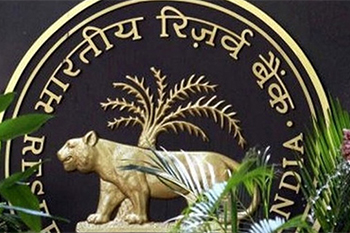
RBI governor, Shaktikanta Das, has an eye for timing. In his post policy address, Das quoted the Father of the Nation, “Satisfaction lies in the effort; full effort is full victory”. In a way that is precisely what the policy did. It was a good effort to balance the various pulls and pushes of monetary conditions. However, it was also a policy about optimism that the current strategy of the RBI should deliver the goods. To that extent, it was more like the immortal Lata Mangeshkar number that Das referred to, “Aaj Phir Jeene ki Tamanna hai”.
On a more serious note, the monetary policy was presented under challenging conditions. Inflation in India is showing no signs of relenting and US inflation at 7% threatened a big dose of imported inflation into India. Indian inflation is still input-driven, as is evident from the spike in input costs of most Indian companies. But amidst the chaos and the risk of a hawkish Fed, RBI reiterated its commitment to revive GDP growth; first and foremost.
Highlights of the Monetary Policy — February 2022
Growth is improving, but private consumption still lags
While tweaking the GDP target for FY22 lower to 9.2%, MPC has pointed to the limited impact of Omicron on economic growth. However, RBI underlined that private consumption still lagged behind pre-COVID levels while the contact intensive sectors like hotels, tourism, travel and transport remained under pressure. RBI expressed confidence that aggressive infrastructure investment plans of Budget-22 would crowd in private investments. However, that called for policy accommodation till private consumption showed palpable recovery.
RBI expects that the COVID pandemic to continue to be an overhang for economic growth for some more time. FY22 GDP growth estimates were scaled down to 9.2%. For FY23, the GDP estimate is pegged at 7.8%. The GDP estimates have been maintained at 17.2% for Q1-FY23 but lowered 80 bps to 7.0% for Q2-FY23. In addition, RBI has estimated GDP growth at 4.3% for Q3-FY23 and at 4.5% for Q4-FY23. A pick up in exports and better capacity utilization is expected to keep growth buoyant in FY23.

RBI pegs Inflation at 4.5% for FY23
Between the Dec-21 policy and the Feb-22 policy, Brent Crude rallied from $75/bbl to $93/bbl amidst uncertainty in the Middle East and Ukraine. However, RBI believes this effect would be largely neutralized by the excise duty cuts and VAT cuts. Despite these risks, the RBI has pegged full year inflation for FY23 at just about 4.5%. Here are 2 reasons why!
Firstly, RBI thinks that a lot of the recent spike in inflation was due to unfavourable base. As the base effect improves, RBI expects inflation to taper. Secondly, RBI expects food inflation to fall with Rabi output coming into markets. Inflation outlook was held for FY22 at 5.3% but pegged lower at 4.5% for FY23. RBI projected inflation at 5.7% in Q4. The FY23 inflation projection of 4.5% is broken up as Q1-FY23 at 4.9%, Q2-FY23 at 5.0%, Q3-FY23 at 4.0% and Q4-FY23 at 4.2%.
Development and regulatory measures announced by RBI
In the last few policies, the RBI has made a lot of key announcements outside the policy statement and as part of regulatory measures. Here is a gist.
a) RBI announced that the Term Liquidity Facility of Rs50,000cr to Emergency Health Services and the On-tap liquidity window for contact-intensive sector of Rs15,000 crore would be extended by 3 months till 30-June, 2022.
b) The Voluntary retention route (VRR) window for FPIs to invest in government debt and corporate debt has a limit of Rs150,000 crore. That limit has been increased effective from April 2022 to Rs250,000 crore.
c) The RBI will be issuing detailed guidelines for credit default swaps (CDS) in India based on the original draft guidelines put out by the RBI in Feb 2021 and the subsequent feedback received from concerned stakeholders.
d) The RBI has decided to increase the upper limit of e-RUPI vouchers from the current Rs10,000 to Rs100,000 to make it more widely acceptable. This will facilitate seamless digital delivery of various government services.
e) The limit of the NACH mandate under the Trade Receivables Discounting System (TREDS) for MSMEs, has been enhanced from Rs1cr to Rs3cr. This will go a long way in addressing the liquidity needs of MSMEs in India.
It looks like the RBI is awaiting greater clarity on high frequency growth and inflation data as well as the US Fed rate action, before committing itself to a decision. For more clarity we must await the MPC minutes on February 24th and the next policy statement on April 08th.
Related Tags

![]() IIFL Customer Care Number
IIFL Customer Care Number
(Gold/NCD/NBFC/Insurance/NPS)
1860-267-3000 / 7039-050-000
![]() IIFL Securities Support WhatsApp Number
IIFL Securities Support WhatsApp Number
+91 9892691696
www.indiainfoline.com is part of the IIFL Group, a leading financial services player and a diversified NBFC. The site provides comprehensive and real time information on Indian corporates, sectors, financial markets and economy. On the site we feature industry and political leaders, entrepreneurs, and trend setters. The research, personal finance and market tutorial sections are widely followed by students, academia, corporates and investors among others.
Stock Broker SEBI Regn. No: INZ000164132, PMS SEBI Regn. No: INP000002213,IA SEBI Regn. No: INA000000623, SEBI RA Regn. No: INH000000248

This Certificate Demonstrates That IIFL As An Organization Has Defined And Put In Place Best-Practice Information Security Processes.